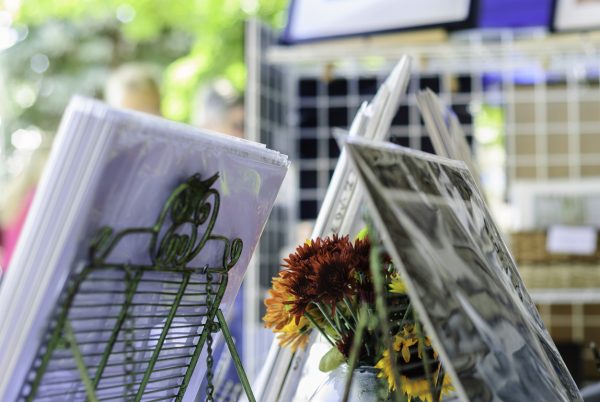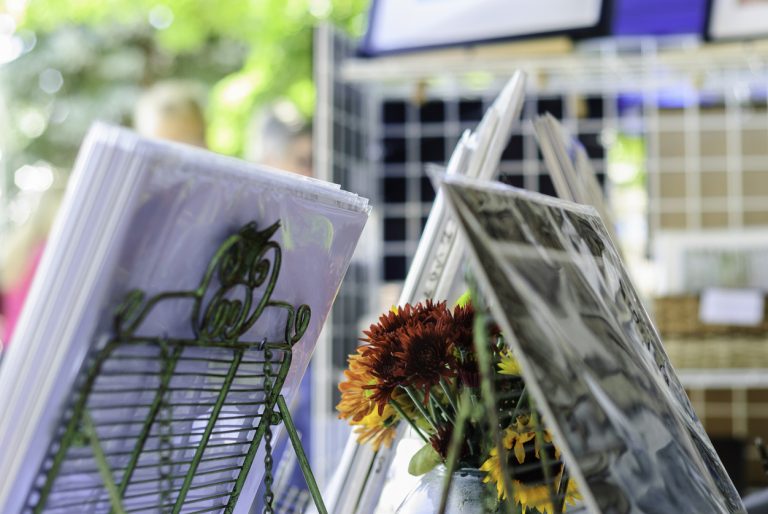If you have read our previous comprehensive artwork pricing guide, you’ll appreciate that selling your artwork isn’t as simple as just adding up all of your obvious expenses (paints, canvas, studio rent and the like) and giving yourself a wage to arrive at a price for your work.
That’s because, whatever your medium, there are so many other factors to keep in mind when attempting to sell your work.
Consider your present ‘status’ and market
Even in simply calculating prices for your works, you will need to consider your track record to date as an artist: What have you done so far in your artistic career to justify a certain price?
Your specific market is another fundamental factor: What level is your target audience likely to buy at? Will you be selling to them in the £1000s per piece of work, or will you need to pitch your artwork at a more affordable level?
As a general rule, the domestic or provincial markets are characterised by lower prices and greater bulk than the international markets centred on the major art capitals — think the difference between the Affordable Art Fair and Frieze.
Do I have to restrict my market to my own locale?
There are naturally big differences between the art markets of, for example, major urban metropolises and rural communities, as well as between more and less affluent areas, that may force you to adapt your work and/or pricing accordingly.
However, it’s worth remembering that your own locale doesn’t necessarily need to be your market as an artist. There’s much to be said for venturing from your own ‘patch’, wherever your actual practice may be based.
What about galleries?

In contemplating the most appropriate relationship to have with galleries, it is important to recognise the distinct dynamics between public and commercial institutions. Public institutions include the likes of the Tate in London, Liverpool and St Ives and the BALTIC Centre for Contemporary Art in Gateshead. Commercial institutions include such spaces as the White Cube and Gagosian Gallery in London.
Many artists understandably aspire to get their works into public collections, such as those of local councils or bigger national institutions like the Tate. These public galleries normally have greater luxury to take a risk on especially challenging or unusual artists than the commercial galleries that often merely follow the lead of higher-profile institutions.
Alternatively, you may be happy to focus your efforts almost purely on the commercial market. However, potential difficulties lie here for emerging artists. The current straitened economic times in the art world have prompted the closure of any mid-market galleries, with an attendant feeding frenzy at the top of the market, as galleries and buyers alike have stuck to surer bets.
Read our past blog post on working with commercial galleries for more advice on this extremely broad and important subject area for artists.
Don’t hesitate — get to work right now!

There are so many things that you can do right now to boost your marketability as an artist and increase your ability to sell work, both now and in the future.
Try visiting five galleries in your nearest city, bringing home press releases and price lists to build up a dossier of potential galleries to associate with. Maybe now is the time to approach a local business support agency about how you can start making your artwork pay.
Or why not sign up to that open-access print studio, submit work for that latest exhibition opportunity, or set up a mailing list for your potential and/or current buyers, sending an informative newsletter every three months?

Perhaps you could even go to art fairs as a mere visitor, seeing what work you like and dislike and comparing your own work with exhibiting artists of a similar level? Art fairs can certainly be invaluable for giving you a sense of how the art market operates, even if some of them, like Frieze, can be very expensive to attend! Even if you can only afford to attend one this year, still go if you can — and maybe consider exhibiting at such a fair one day with the benefit of what you learn.
Producing, marketing and selling your work is a constant learning process, whatever your career stage, so you shouldn’t be afraid to try new things and fail from time to time. What could you be doing today to make your art more sellable?
This post was originally published in January 2016. Last updated on September 24, 2021.







